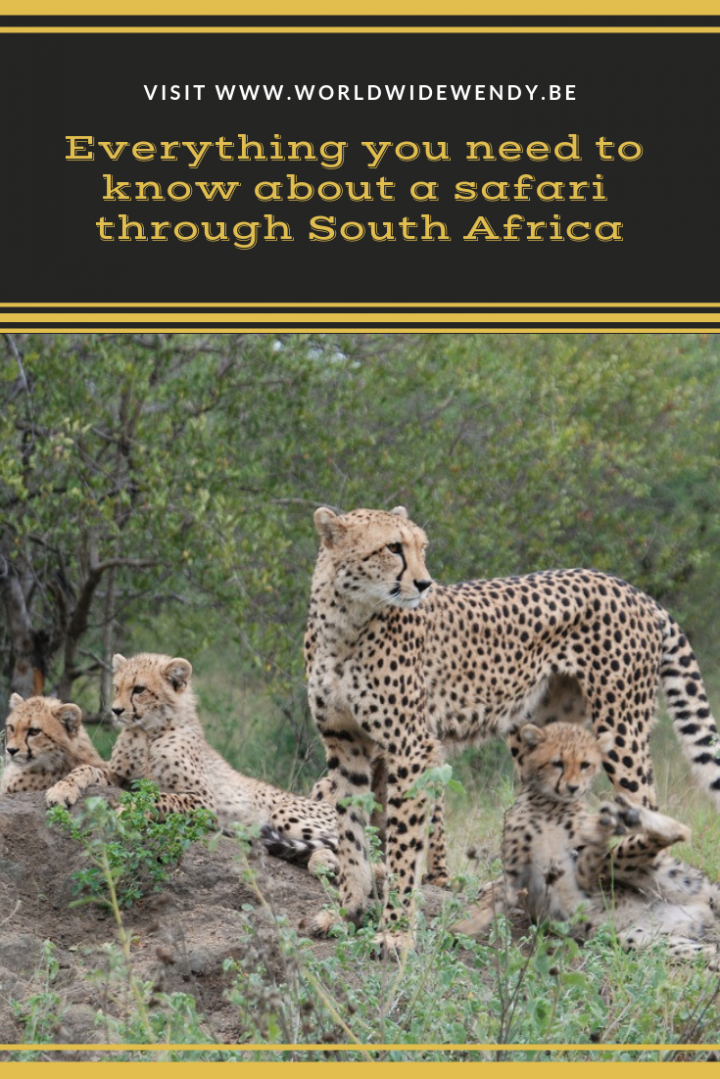The word “safari” actually just means “journey”. But a safari in South Africa is an experience you’ll never forget. There you will find the most impressive animals of this fascinating continent. And of course you will want to spot “the big five” during your safari. In a collaboration with Sable Tours here is more information and some tips to get the most out of your safari.
The ‘big five’
The “big five” is a term from times when game hunters went around with a rifle, and when people did not appreciate the beautiful nature of this part of the world. “Big” therefore does not necessarily equate large animals. The hippo and the giraffe are not part of this Famous Five, as the term refers to animals that were dangerous to hunt.
- The rhino is usually in a bad humour and is somewhat short-sighted. Getting close to it is taking a risk.
- Elephants are seen as very intelligent, but also aggressive when they feel threatened.
- The buffalo is known for trying to kill the hunter that injured it.
- It is well-known that the lion is a dangerous predator and that it can quickly kill a human.
- The leopard is less large and powerful, but is a master at hiding. This means it can get very close to humans before it is discovered.
People who hunted those animals on foot might have felt brave, but were also taking stupid risks.

What's the best way to spot the big five?
You don’t want to miss the big five during your stay in South Africa? It is often a combination of good preparation and good luck that allows people to quickly tick all five animals off their list. Normally it will take a bit of time. To start with, you will have to choose an area where all five animals are spotted regularly. And you need to be lucky with the weather. The wild cats won’t show themselves if it is rainy, they rather keep their feet dry. Also consider the fact that most animals, especially the cats, will be active during the coolest part of the day. That means setting the alarm and hitting the cool road at sunrise. Between 11 and 2 it is time to rest and enjoy a nice lunch. And then after 3 o’clock the excitement starts again. Some animals will be looking for a safe place to spend the night, others are looking for their evening meal. These are the perfect times to go on safari.

Tips for the serious safari enthusiasts
- Check the waterholes during hot days, this is logically the place where you can find animals looking for water.
- Ask people you meet coming from the opposite direction what animals they have seen, then you know what animals you can expect nearby
- Take note of the behaviour of the prey you see. Are they restless? Then there is a chance that there are large predators are near, awaiting their chance.
- Always take a pair of binoculars. You can scan the wider area at ease, and you have a better chance of spotting animals. Here are some worth considering.
- Also look for tracks on the ground. Even though you are not an experienced tracker, it is easy to spot fresh tracks.
- Don’t be disappointed if you don’t spot the big five during your first safari. Enjoy all the beauty around you, and notice all plants and animals in this nature-rich area.
- Look at the shrubs and bushes in particular. If you see unnatural movement, it could just be an animal in there who thinks it is invisible.
- Patience, patience, and more patience!

There are many types of safaris
A self-drive safari is always an option. However, it is recommended to visit the area with a ranger, particularly if it is your first time there. They often use jeeps that hold up to 10 people, or trucks that can carry up to 20 people. Rangers know better where they can expect the animals, and what behaviour they will display. And they are also in frequent contact with their colleagues to spot as much wildlife as possible. If you are looking for a real adventure, consider a walking safari. Needless to say, they can only be done under strict expert guidance.


Like it? Pin it!
